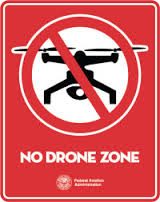 It’s no secret that the FAA has been working with CACI International on drone detection technology around airports. But the FAA contract with CACI is apparently very secret indeed.
It’s no secret that the FAA has been working with CACI International on drone detection technology around airports. But the FAA contract with CACI is apparently very secret indeed.
The FAA announced in February that it would partner with CACI International on technology to identify what they called “rogue drones” and their operators, which they refer to as “bad actors,” around airports. The CACI system, called SkyTracker, uses radio frequency sensors placed around airports – or, potentially, other secure areas – to determine the location of both rogue drone and operator.
“The explosive growth of the unmanned aircraft industry makes evaluating detection technologies an urgent priority,” Marke “Hoot” Gibson, FAA Senior Advisor on UAS Integration, said in the FAA statement announcing the collaboration. “This research is totally aimed at keeping our skies safe, which is our number one mission.”
At the time, DRONELIFE noted that the FAA had not reached out to industry groups on the project, but had partnered instead with the Department of Homeland Security (DHS,) signing a Memorandum of Understanding with DHS last December to collaborate on drone integration policy, saying that drones near airports offered a “potential security issue” for DHS.
The introduction of DHS into the deal may have something to do with the fact that there has not been any public discussion of the program’s details. It may also be part of the reason that large portions of the FAA and CACI contract, obtained by Motherboard using the Freedom of Information Act, were redacted. Motherboard posted a copy of the contract on their site at the above link.
The contract delivered to Motherboard upon request had specific details removed – but this was done without an official exemption, and Motherboard has appealed the decision. What the contract does say is that the FAA has become convinced that their education efforts aren’t working, and that a technology approach to keeping drones out of airport space is necessary.
“Data shows that current training, outreach, and educational campaigns are not sufficient deterrents to UAS interference at airports and other critical airspace,” the contract states.
No money will change hands under the terms of the contract, which is good until fall of 2017, but the FAA has promised to provide CACI with other services and provisions, such as testing facilities at airports and access to research and FAA scientists and engineers.
The FAA noted upon delivery that it had withheld seven pages of the contract, citing trade secrets. What was delivered held no particular detail on how, where, and when the program might be deployed, despite Motherboard’s particular request for information on those points. In addition, one page of the document had much of the detail blacked out with a magic marker, without an explanation or cited exemption.
As the FAA works to up the pace of drone integration, it faces distrust from the drone industry who have not yet seen clear regulations that would support them. The added level of secrecy around this program – which could have a significant impact on any drone operating in an urban environment with multiple airports – will not allay their fears.

Miriam McNabb is the Editor-in-Chief of DRONELIFE and CEO of JobForDrones, a professional drone services marketplace, and a fascinated observer of the emerging drone industry and the regulatory environment for drones. Miriam has penned over 3,000 articles focused on the commercial drone space and is an international speaker and recognized figure in the industry. Miriam has a degree from the University of Chicago and over 20 years of experience in high tech sales and marketing for new technologies.
For drone industry consulting or writing, Email Miriam.
TWITTER:@spaldingbarker
Subscribe to DroneLife here.







Leave a Reply